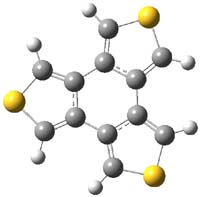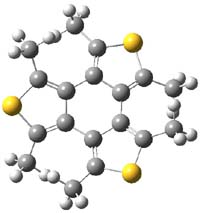Here’s one more attempt to discern the failure of DFT to handle simple alkanes (see this earlier post for a previous attempt to answer this question). Tsuneda and co-workers1 have employed long-range corrected (LC) DFT to the problem of the energy associated with “protobranching”, i.e., from the reaction
CH3(CH2)nCH3 + n CH4 → (n+1) CH3CH3
They computed the energy of this reaction for the normal alkanes propane through decane using a variety of functionals, and compared these computed values with experimentally-derived energies. Table 1 gives the mean unsigned error for a few of the functionals. The prefix “LC” indicated inclusion of long-range corrections, “LCgau” indicates the LC scheme with a gaussian attenuation, and “LRD” indicates inclusion of long-range dispersion.
Table 1. Mean unsigned errors of the “protobranching”
reaction energy of various functional compared to experiment.
|
Functional |
MUE |
|
|
|
|
LC2gau-BLYP+LRD |
0.09 |
|
LC-PBE+LRD |
0.17 |
|
SVWN5 |
0.27 |
|
LCgau-PBE |
1.56 |
|
M06 |
1.98 |
|
LC-PBE |
2.24 |
|
M06-2x |
3.40 |
|
B3LYP |
5.97 |
|
HF |
6.96 |
|
|
|
A number of important conclusions can be drawn. First, with both LC and LRD very nice agreement with experiment can be had. If only LC is included, the error increases on average by over 1 kcal mol-1. The MO6-2x functional, touted as a fix of the problem, does not provide complete correction, though it is vastly superior to B3LYP and other hybrid functionals. The authors conclude that the need for LC incorporation points out that the exchange functional lacks the ability to account for this effect. Medium-range correlation is not the main source of the problem as large discrepancies in the reaction energy error occur when different functionals are used that are corrected for LC and LRD. Choice of functional still matters, but LC correction appears to be a main culprit and further studies of its addition to standard functionals would be most helpful.
References
(1) Song, J.-W.; Tsuneda, T.; Sato, T.; Hirao, K., "Calculations of Alkane Energies Using Long-Range Corrected DFT Combined with Intramolecular van der Waals Correlation," Org. Lett. 2010, 12, 1440–1443, DOI: 10.1021/ol100082z




